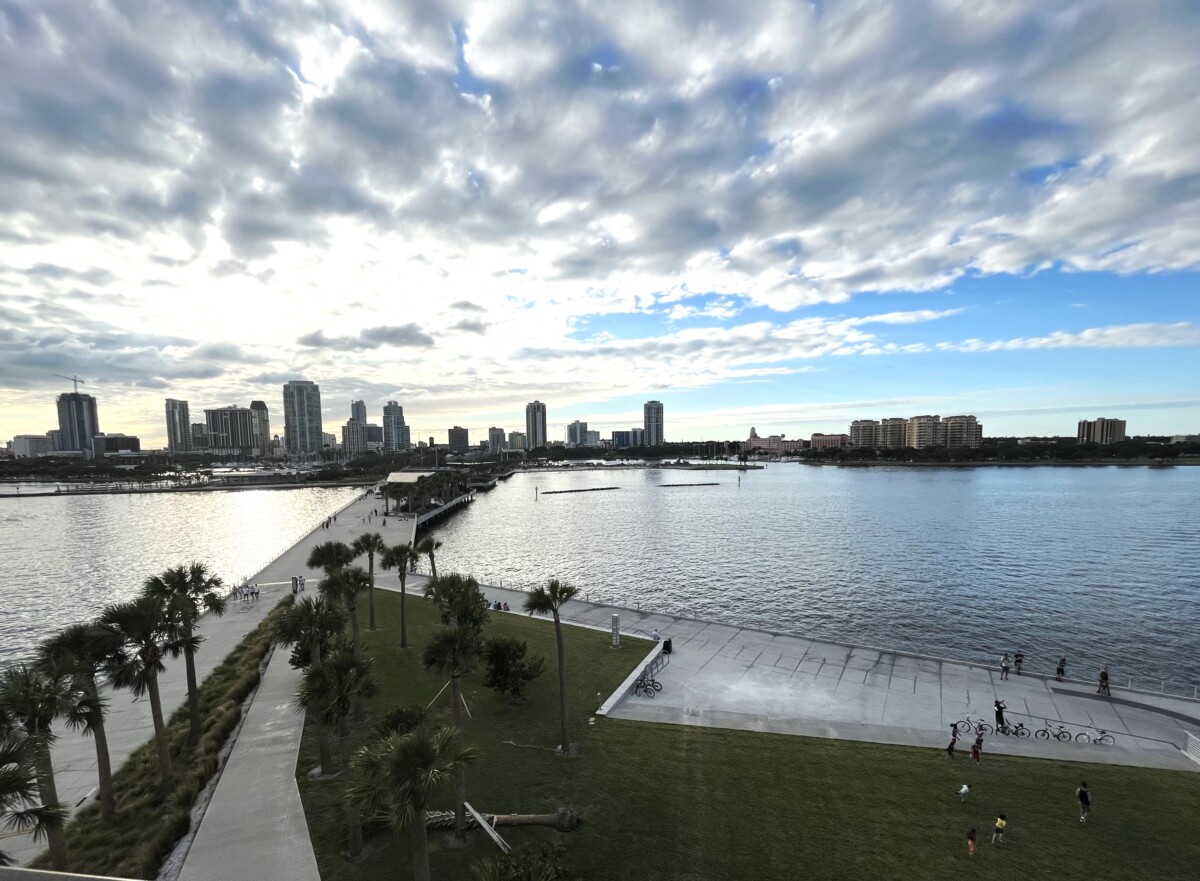For fall break we decided to pick up Thing 1 in St. Augustine and spend a couple of days in St. Petersburg, Florida. We had planned to do this trip for spring break 2020, but like everyone else, we canceled the trip due to the pandemic.
En Route – Daytona Beach Shores
We stopped for the night in Daytona Beach. This was a few weeks after Hurricane Ian pummeled the coastline and many hotels remained shuttered. Fortunately, our hotel suffered minimal damage but the pool deck and access to the beach remained closed.
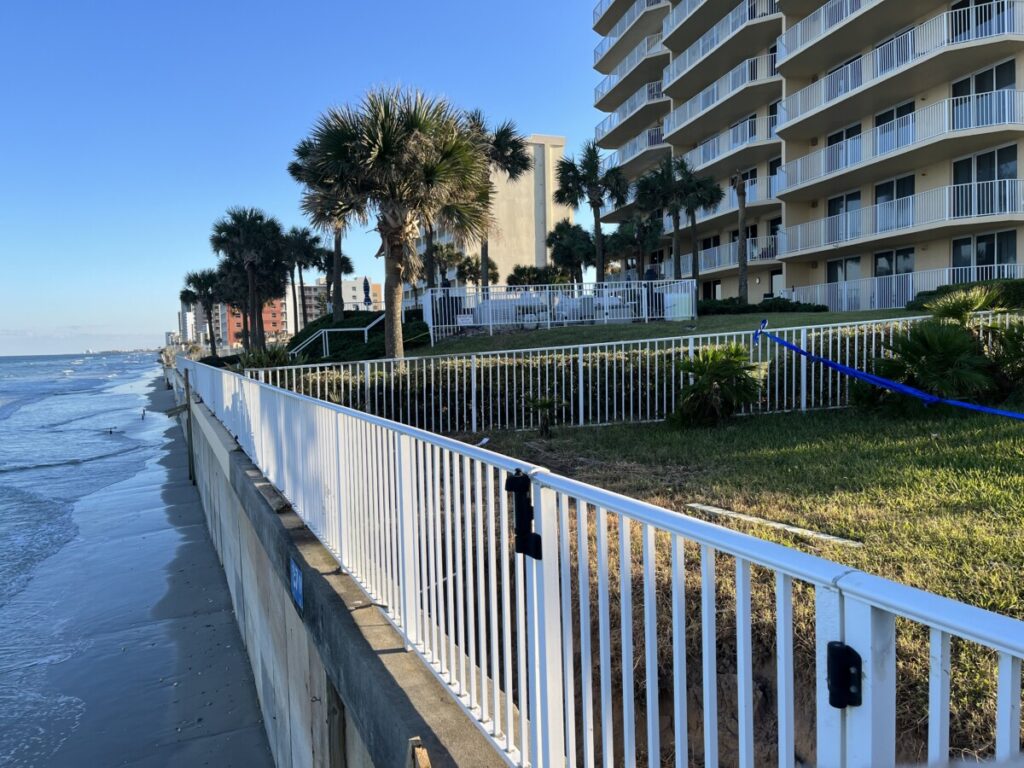
Although known for wide areas and hard-packed sand that allow vehicles, the beach area looked vastly different after Hurricane Ian. Even at low tide, the ocean reached the sea wall prohibiting access. Surprisingly, Daytona felt like stepping back into a beach film made in the 1950s with lots of Mom and Pop high-rise hotels.
Tampa
After driving a couple of hours, we stopped for lunch in Tampa at Armature Works. This converted 1910-built warehouse turned vibrant mixed-use commercial space sits along the Hillsborough River. The food court area, called Heights Public Market, offers coffee, ice cream, tacos, a wine bar, and many other dining choices with both indoor and outdoor seating area.
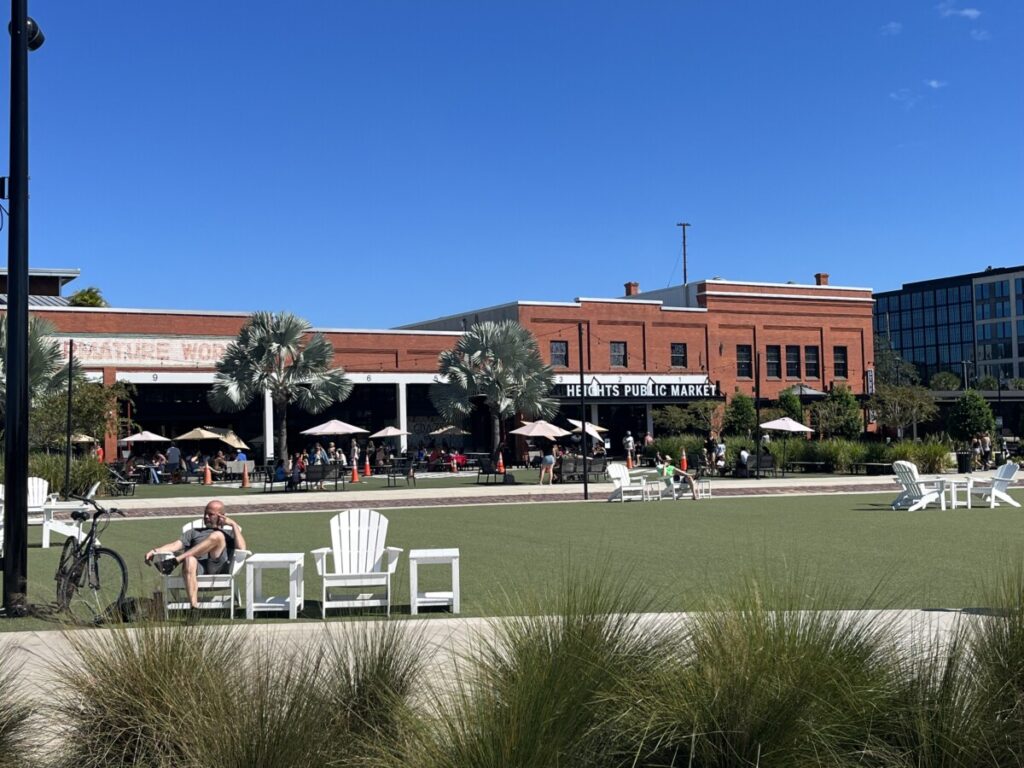
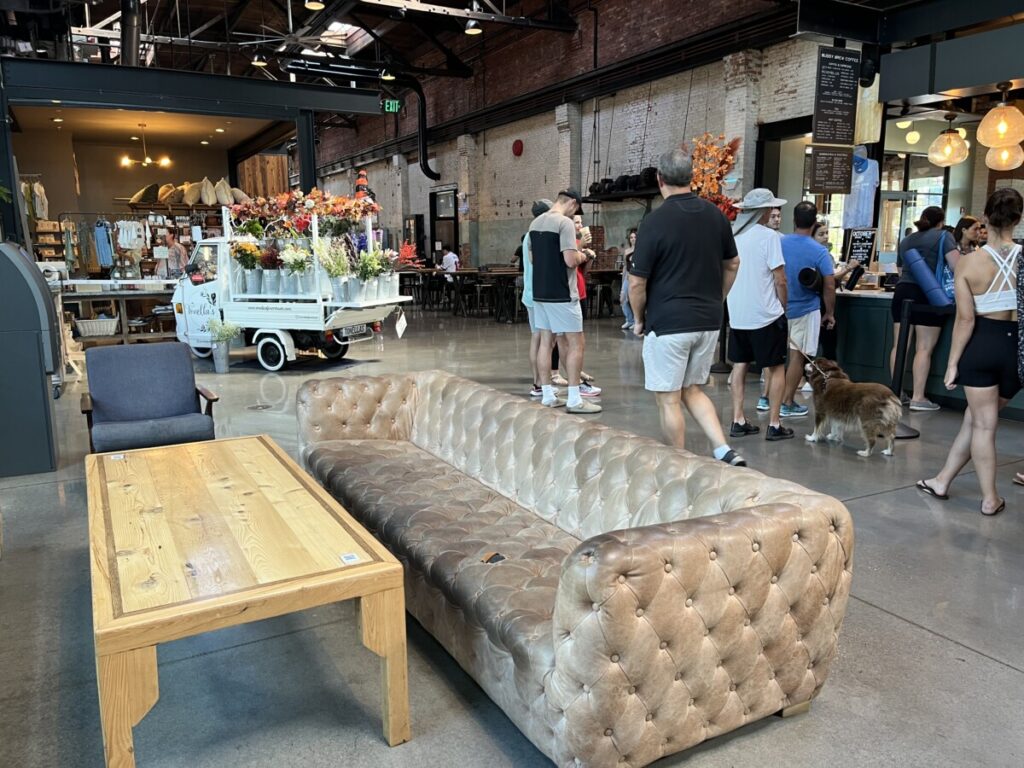
Outside, the riverfront property sits along the 2.6-mile Tampa Riverwalk. Connecting 35 points of interest in the downtown area, the path affords visitors a chance to walk, ride bikes, or take a segway to explore the area in more detail. Sculptures and placards along the route detail Tampa’s history while art displays line the path.
St. Petersburg
Sunken Gardens
Upon arriving in St. Petersburg, we toured Sunken Gardens. Fearing a kitschy tourist trap, I didn’t know what to expect. It turns out, Sunken Gardens began over 100 years ago by George Turner and features over 50,000 exotic plants in a four-acre plot of land.
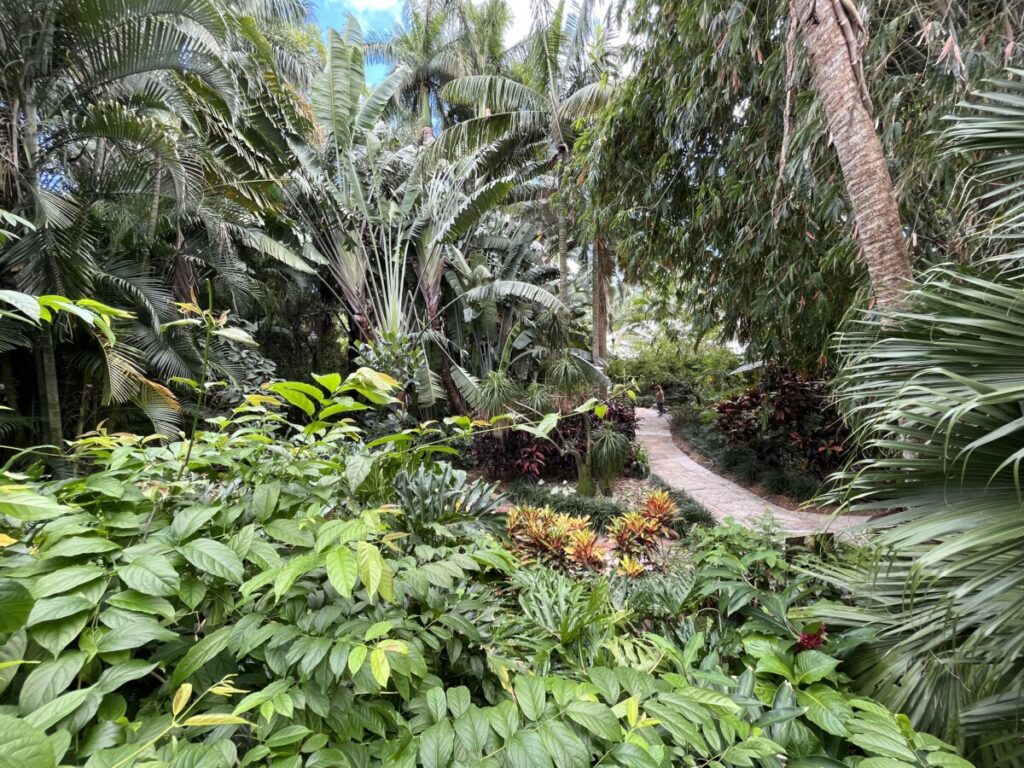
Perfect for an hour or so, visitors can wind around the pathways viewing native palm trees, oaks, and a eucalyptus tree with rainbow-colored bark. But that’s not all – the gardens feature Chilean pink flamingos, parrots, and tortoises. The paths took us to an orchid arbor, a coconut grove, and a koi pond.
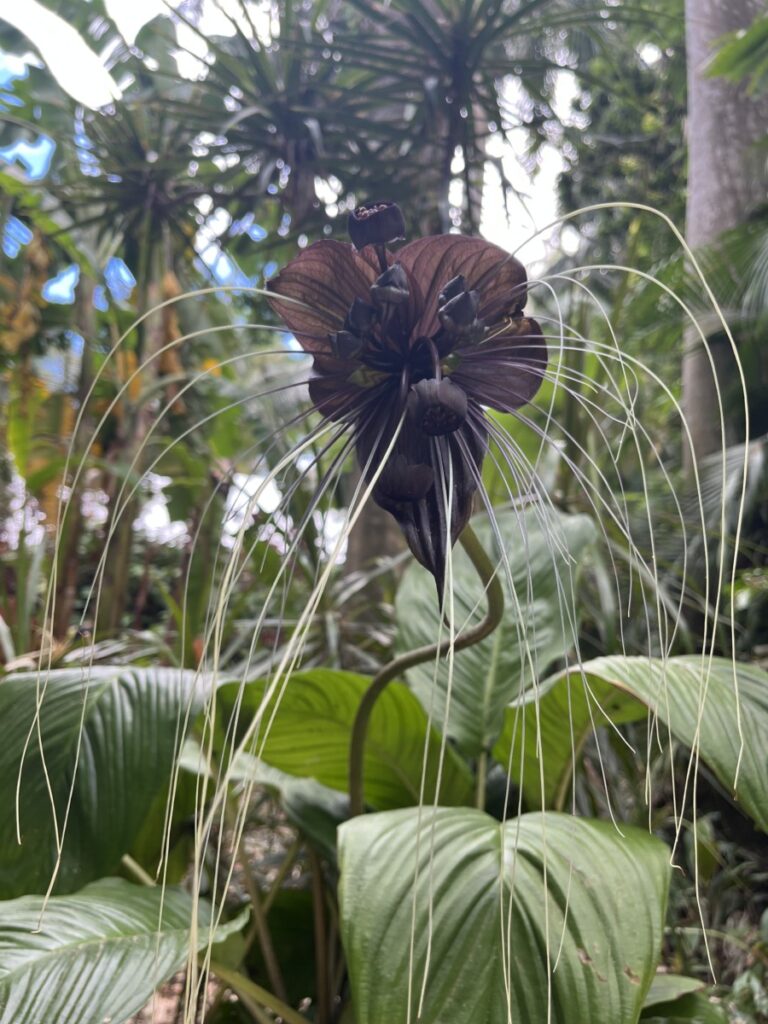


The gardens began in 1903 when George Turner purchased the land. Soon he drained the lake, creating a sunken and fertile area for growing mangoes and other fruits, which he and his wife sold. Over the years, Turner added flamingos, walkways, and more exotic plants while giving tours for a small admission fee.
The roadside tourist attraction drew annual crowds of 200,000 during its heydey. However, by the late 1980s, interest declined and the family wanted to sell. Through a one-time property tax, the City of St. Petersburg purchased the property and maintains it today.
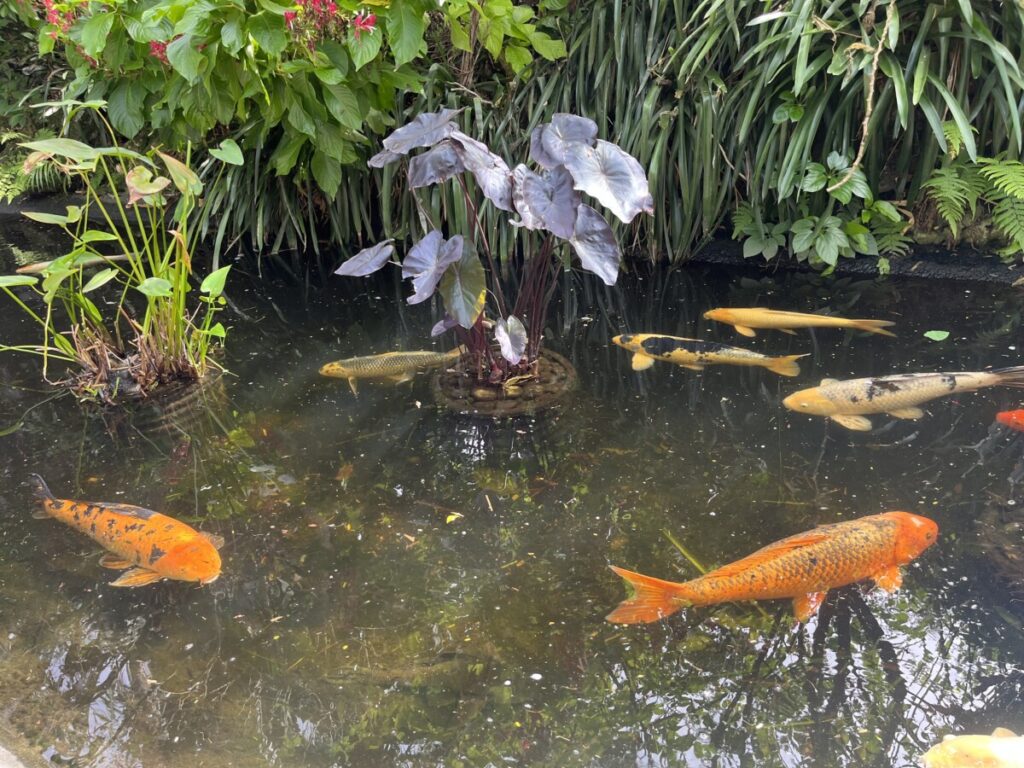
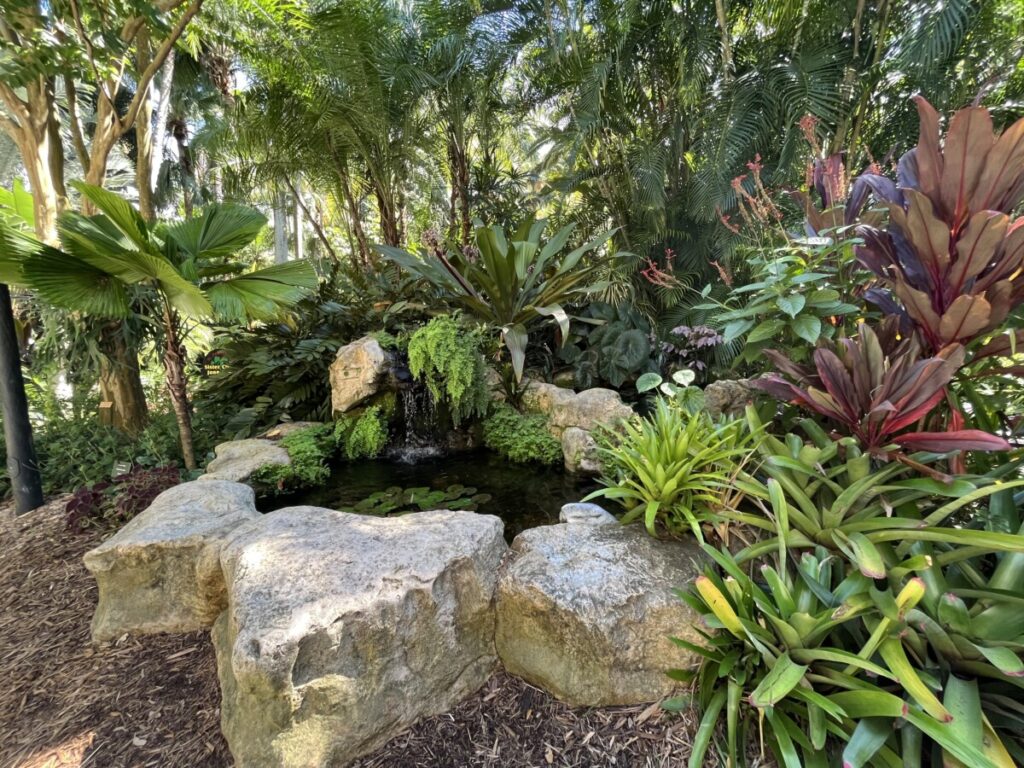
While I wanted to stay a bit longer in the meditation garden, we moved on to the waterfall, butterfly garden, and a succulent area filled with cacti. We walked past a large lawn area used for weddings before exiting the gardens through the gift shop.
If you want to see a bit of Old Florida, Sunken Gardens is the place. You’ll feel far removed in these four acres in the middle of St. Petersburg. The trees provided plenty of shade, but bugs can be a problem.
Paciugo Gelato & Caffe
Since we postponed this trip a couple of years, friends and family had plenty of time to give recommendations for food. One of these was Paciugo Gelato, located on Beach Drive across from North Straub Park.
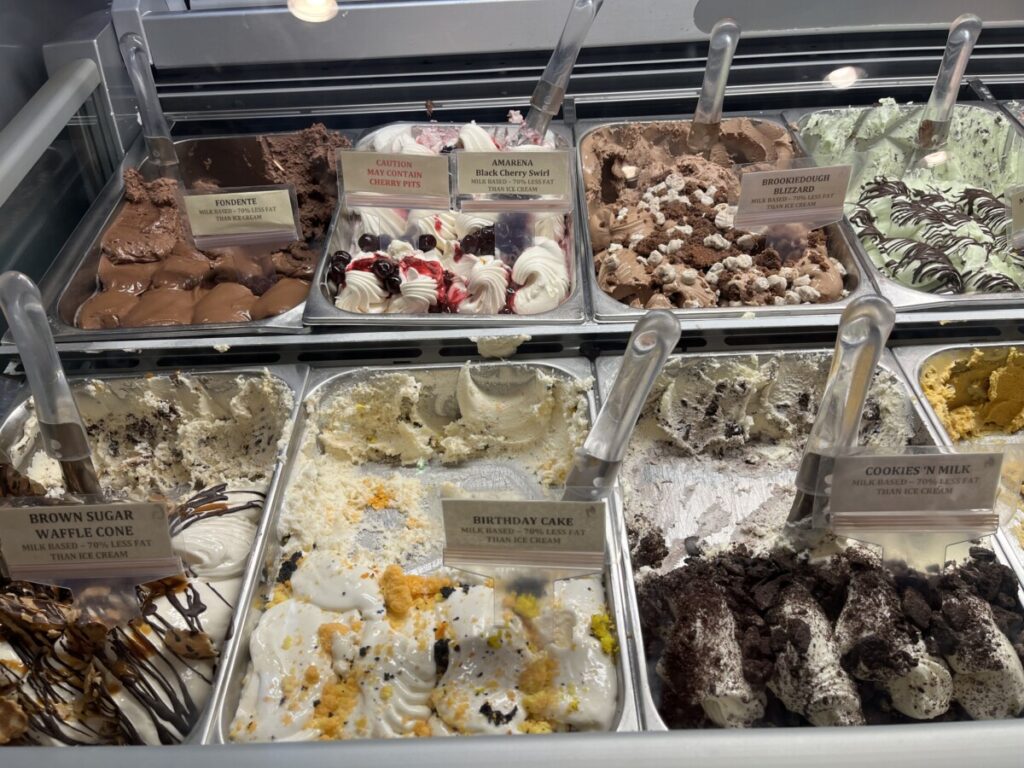
Anytime you see a long line at a well-staffed establishment, you know it has to be good. Paciugo Gelato featured tons of flavors and we could order up to three flavors in the size bowl we chose. Sitting at the outdoor tables, we finished our gelato before we could share it with Dear Hubby (DH).
St. Petersburg Pier
Any visit to the area warrants a walk to the end of the St. Peterburg Pier. Since the first pier was constructed in 1889, the city has boasted numerous piers overlooking Tampa Bay. For great pictures of older piers from the St. Pete Pier website, including the famous 3,000-foot Electric Pier (1906-1914), click here.
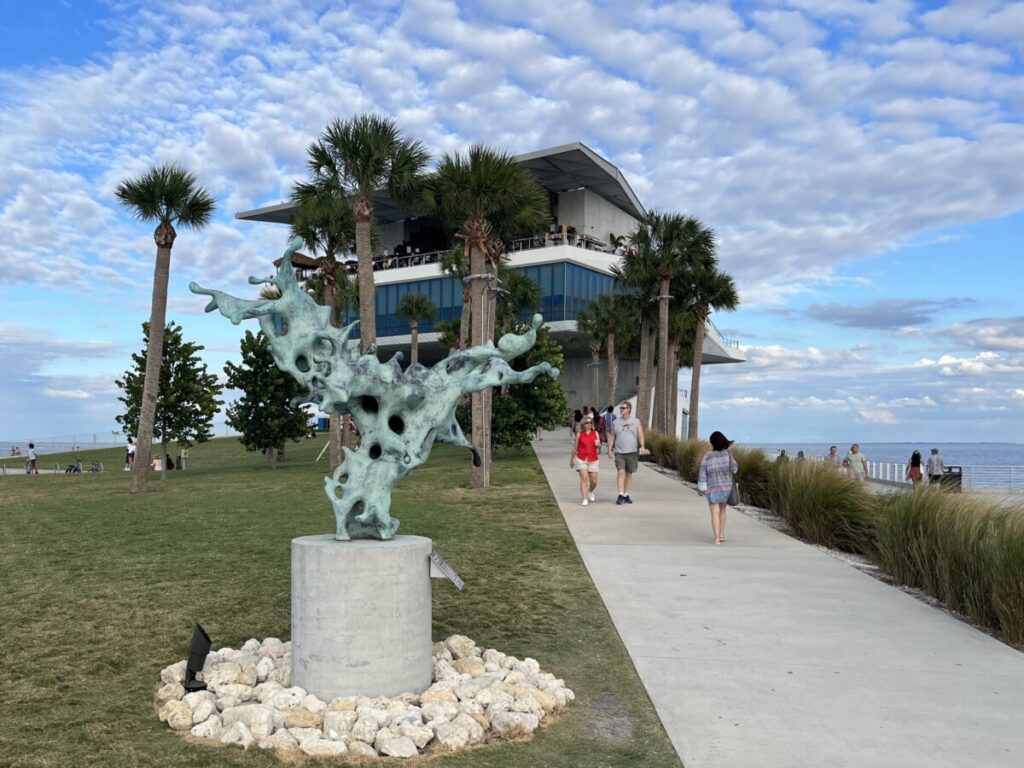
The newest iteration of the St. Petersburg Pier recently opened in the summer of 2020. Replacing the 1970s-built Inverted Pyramid Pier, the new design features 26 acres of activity including a playground, splash pad, spa beach, fishing deck, and discovery center. At the end of the 0.5-mile-long pier, several restaurants and bars offer beautiful views of the water.
Don CeSar Hotel – St. Pete Beach
The Don CeSar Hotel pays homage to a grander type of travel harking back to the 1920s era. With impressive pink stucco, the aptly nicknamed Pink Palace sits on the sandy beaches of the Gulf at St. Pete Beach. Completed in 1928 at a cost of over $1 million, the six-story hotel with Moorish and Mediterranean architecture welcomed famous guests including F. Scott Fitzgerald, Al Capone, and President Franklin Roosevelt in its heydey.
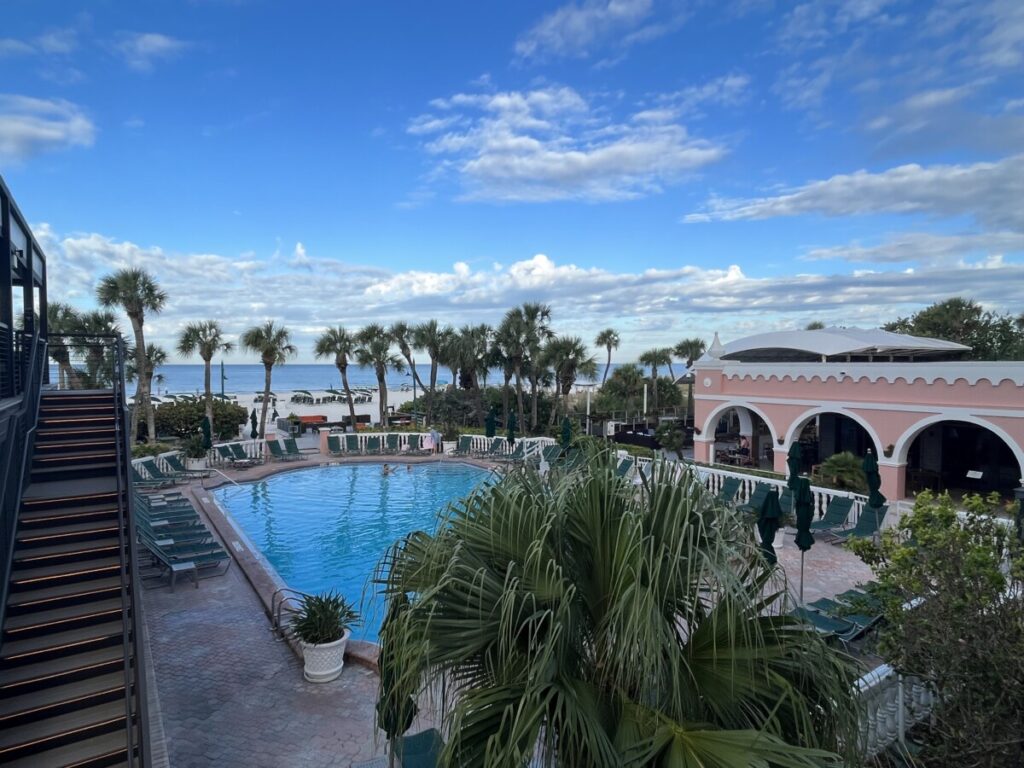
The hotel survived the Depression thanks to a three-year contract with the New York Yankees to stay at the hotel during spring training. However, after owner Thomas Rowe’s death, the US Government purchased the property in 1942 for a military hospital and then later as a VA Headquarters. By the early 1970s, the abandoned building continued to decline and St. Pete residents feared demolition. A successful “Save the Don” campaign raised enough funds to purchase the property and restore the hotel to its former glory in 1973. Today, non-hotel guests may purchase a day pass to enjoy the pool and beach access.
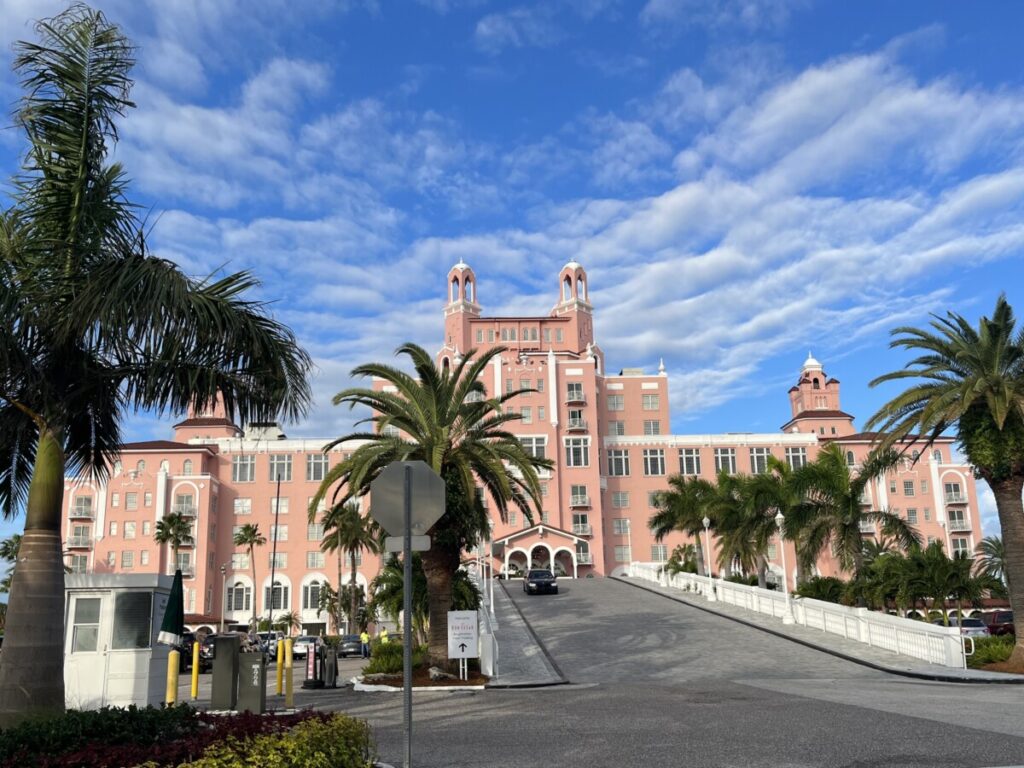
Salvador Dali Museum
One may wonder about the connection between St. Petersburg and Spanish artist Salvador Dali (1904-1989). There’s not one. Long-time friends of Dali, Mr. and Mrs. Reynolds Morse showcased their extensive Dali collection spanning 40 years in their Ohio home. When the Morses decided to donate their collection in the late 1970s, St. Petersburg city officials campaigned heavily for the opportunity. Their results paid off as the Dali Museum opened in a marine warehouse in St. Petersburg in 1982.
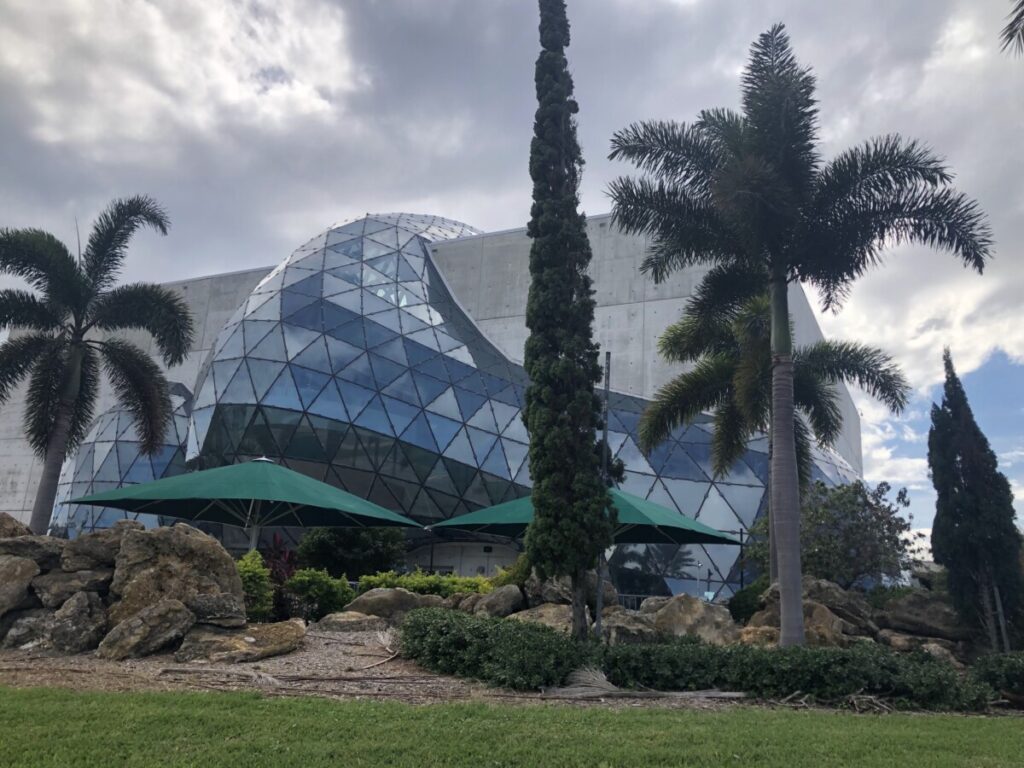
In 2011, the museum moved to an architecturally aesthetic new building made with hurricane-proof walls and over 1,000 glass triangle pieces. Visitor galleries for Dali’s art reside on the third floor while resource materials (Center for the Avant-garde) and offices sit on the second floor. The first floor contains a theatre, gift shop, and cafe. Outside, the Avant Garden overlooks Tampa Bay. Even if you’re not a fan of Dali, the building is worth the price of admission.
St. Petersburg Museum of History
Being a history buff, I took a quick tour of the St. Peterburg Museum of History, located near the St. Pete Pier. My favorite gallery highlighted several of the popular early hotels including the Sorrento (demolished 1992), the Suwanee (converted to county offices), and the Vinoy (still in existence today).
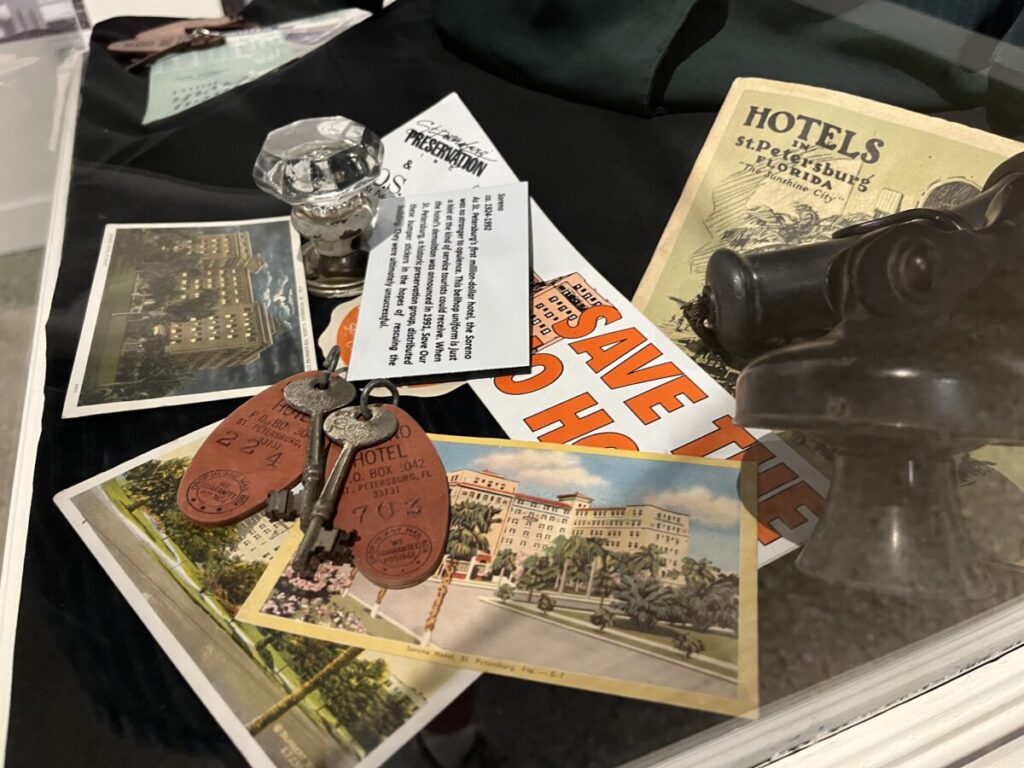
Another section covered the history of St. Petersburg’s many piers while another displayed the “World’s Largest Collection of Autographed Baseballs” before leading to the last gallery detailing the history of the first commercial airline. Surprisingly, the first airline began in St. Pete in 1914 taking passengers to Tampa twice daily in a bi-wing seaplane. Although the airline only operated for a few months during the high season that one year, it set the stage for future commercial ventures.
Conclusion
We packed a lot in our 2-night stay in St. Petersburg. After leaving, we made one more stop – this time to the former Tampa Bay Hotel at the Henry B. Plant Museum. You can read about it here.
This quick trip just scratched the surface. I definitely want to come back to explore the attractions along the Tampa Riverwalk in more detail, as well as relax on the Gulf of Mexico at Clearwater and St. Pete Beach.
